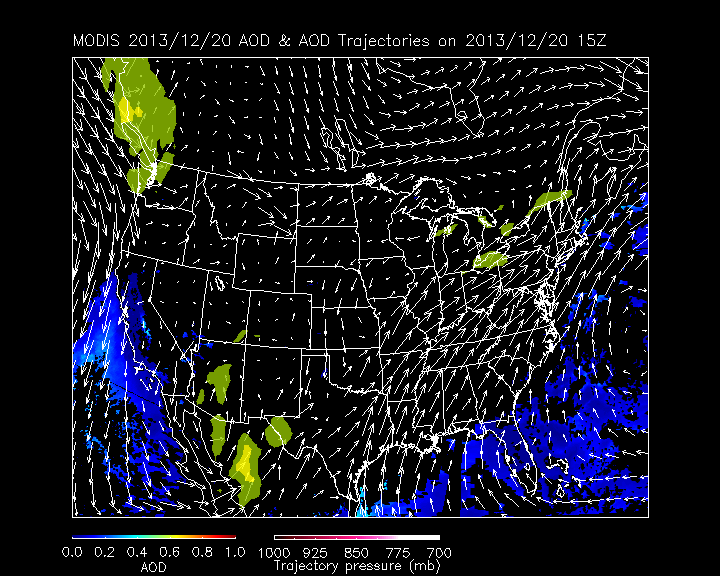What does a computer company want with a bunch of meteorologists?
A few weeks ago, IBM announced it was acquiring The Weather Company, which owns Weather.com and Weather Underground, and the Wall Street Journal reported they were paying more than $2 billion for the privilege.
But why?
One word: data.
According to The New York Times, while The Weather Company employs many atmospheric scientists and meteorologists, nearly three-quarters of its scientists work in data and computers. The Weather Company was already storing most of its data with IBM’s cloud computing platform, and now Big Blue has access to all that data, which they can now sell to other companies who need to know about the weather.
Art (simulated chaos) inspired by weather data
A new Farmer’s Almanac?
The ability to reliably predict the weather has always been important, but people wrongly assume that weather data is only useful to a handful of industries, like agriculture and transportation. In fact, weather data is increasingly important in scores of industries to create accurate predictive models using machine learning algorithms.
Technology companies and analytics vendors who can build accurate weather data into their predictive models could see a massive competitive advantage.
Picture, for example, a trucking company that could reroute deliveries around an incoming storm.
But weather affects all sectors of our economy in sometimes surprising ways:
- Weather patterns affect retails shopping. If an area has a very warm fall or very cold spring, people postpone buying the next season’s clothes, and retailers end up selling more on sale than at full price.
- Weather events like snow storms can impact holiday shopping and may drive shoppers online instead of to physical retail locations.
- Major weather events, like hurricanes, can have lasting effects on everything from the construction business to insurance rates.
- Pharmaceutical companies use weather predictions to predict flu and cold medicine demand.
- Utilities need to understand weather patterns to prevent brownouts and other events that tax infrastructure and supplies.
- Fashion retailers need to know months ahead of time whether to stock up on cold weather gear.
- Sometimes trends are harder to spot. A manufacturer of small truck-mounted snow plows realized its sales were slumping despite heavy winter snows because of the previous season’s drought. Many seasonal snow plow drivers work landscape jobs in the summer, and the drought had impacted their cash flow.
- A hot summer followed by a cold winter is tough on cars, meaning that the auto service industry would want to stock up on parts and possibly hire more labor.
- And, of course, weather information is vital to the agricultural industry.
Because of all this, a company that could help accurately predict these patterns and apply them to business forecasts could become invaluable.
Source for picture: click here
A smart umbrella?
The other part of this equation has to do with the Internet of Things.
IBM has announced that customers with existing Internet of Things devices connected to its cloud computing services will now be able to access weather data.
In addition, The Weather Company has a popular smartphone app that collects barometric pressure data from phones’ sensors in millions of locations around the world 96 times a day.
As is often the case, combining IBM’s analytics power and the weather data collected by The Weather Company will undoubtedly lead to more answers — and more questions — than we can accurately predict at this time.
Let’s just say, the forecast is good for this merger.
DSC Resources
- Career: Training | Books | Cheat Sheet | Apprenticeship | Certification | Salary Surveys | Jobs
- Knowledge: Research | Competitions | Webinars | Our Book | Members Only | Search DSC
- Buzz: Business News | Announcements | Events | RSS Feeds
- Misc: Top Links | Code Snippets | External Resources | Best Blogs | Subscribe | For Bloggers
Additional Reading
- The 10 Best Books to Read Now on IoT
- 50 Articles about Hadoop and Related Topics
- 10 Modern Statistical Concepts Discovered by Data Scientists
- Top data science keywords on DSC
- 4 easy steps to becoming a data scientist
- 13 New Trends in Big Data and Data Science
- 22 tips for better data science
- Data Science Compared to 16 Analytic Disciplines
- How to detect spurious correlations, and how to find the real ones
- 17 short tutorials all data scientists should read (and practice)
- 10 types of data scientists
- 66 job interview questions for data scientists
- High versus low-level data science
Follow us on Twitter: @DataScienceCtrl | @AnalyticBridge


